Spring is here, in all its excitements of color and vivacity. May is just around the corner, and with it comes the best time of the year to plant biodynamically. We install landscapes from April to November, have done so for decades, and can confidentially say that gardens planted in May have the fastest, fullest growth trajectory of any month of planting. Why? It is grounded in biodynamic principals that have been practiced for decades. Biodynamic planting was founded as an alternative to traditional agriculture, but quickly spread to all manner of gardens for its effective and holistic approach. Read on to deep dive into biodynamic landscaping and see biodynamic case studies from our work.
Origins of Biodynamic
Rudolph Steiner is considered the grandfather of biodynamic farming, dating back to the 1920s in Austria. Biodynamic farming is a holistic approach to cultivation that considers plants, animals, and soil together as a living “farm organism.” This framework of considering every element as interconnected relates back to ecology principals: everything is connected to everything. If nothing else, it is a helpful philosophy to understand that every input and intervention has a ripple effect, for better or worse.
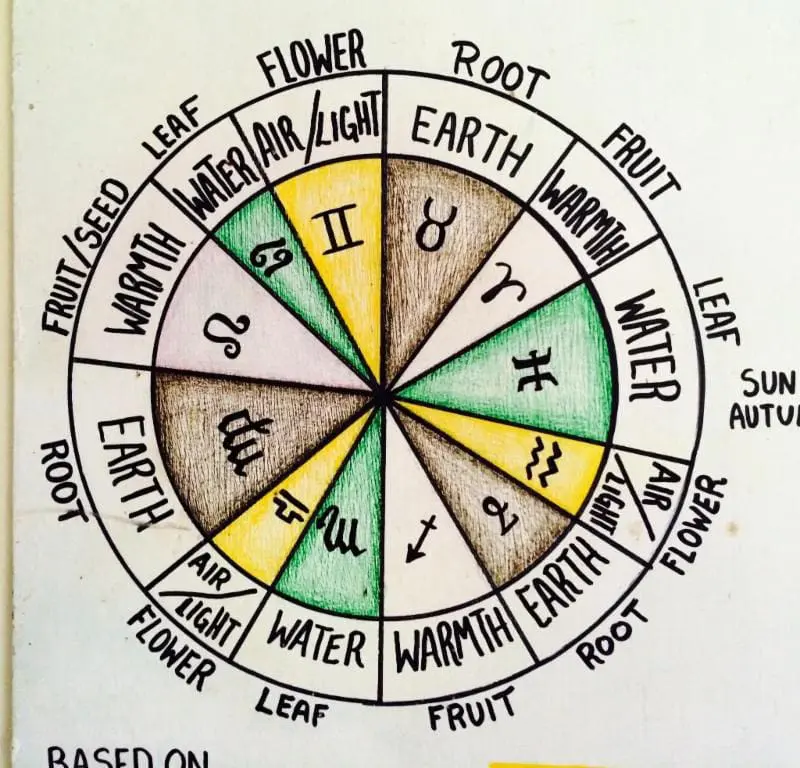
Biodynamic Calendar & Planting by the Cosmos
A main tenant of biodynamic horticulture is aligning farm or garden tasks with the phases of the moon and the position of the moon in relation to constellations. The methodology organizes plants by how they are most used: for their roots, their leaves, their flowers, or their fruit. The
Stella Natura calendar is published every year as a guide for growers seeking to follow Steiner’s philosophy. While some may consider the cosmos outside the realm of traditional farming, Stella Natura maintains that “in order to understand plant life, we must expand the scope of our thoughts to include the whole universe.”
Phases of the moon influence the amount of water in the soil, in the same way that they influence ocean tides. During the new moon and full moon, the soil has the highest water content. Just after the full moon, the soil is still moist, but the declining moonlight is said to benefit root growth. This is considered the best time to plant perennials and root vegetables, to encourage strong root development. The full moon is also a great time to sow seeds to optimize germination.
While this all may sound a bit woo-woo, there are scientific studies to back it up. One study found that during the full moon, tobacco plants “change their nuclear morphology and their proteomic and metabolomic profiles, which might profoundly affect plant performance.” The full moon is thought to act as a physiological signal to plants to ramp up certain cellular processes.
Conversely, harvesting during the full moon is thought to be inopportune, because of the increased water content in fruits. In earlier times when food storage was essential, food with high water content did not store as well.
Some practitioners of biodynamics organize their farming or gardening tasks according to when the moon is in an earth, water, fire or wind constellation. You can find a breakdown of the supposed properties of these constellations and their impact on homestead.org.
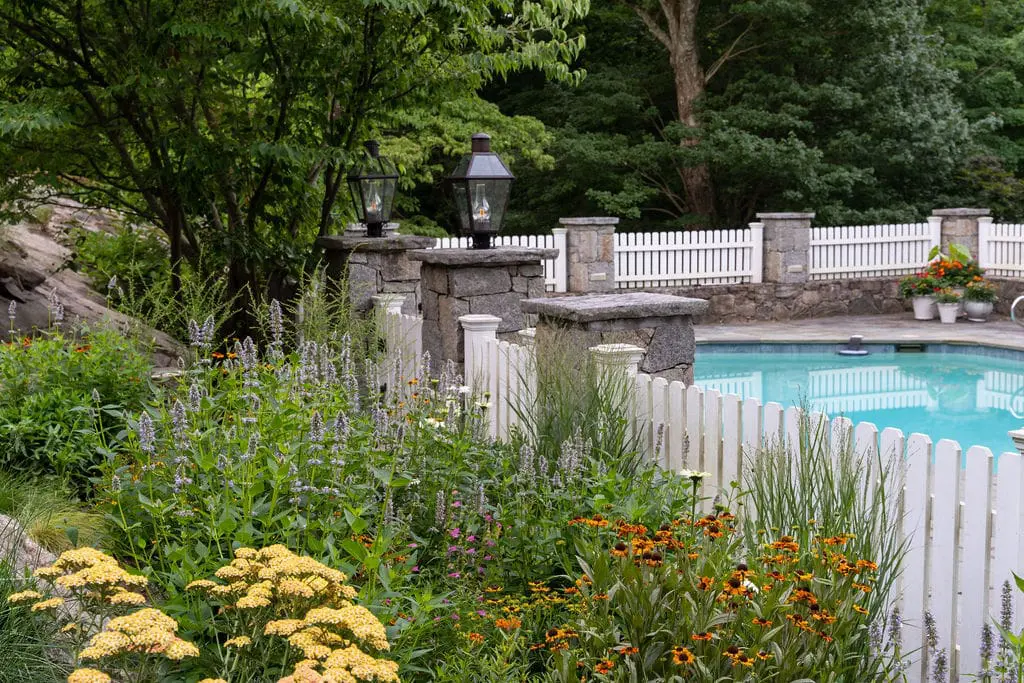
Biodynamic Meets Residential Landscaping
At Green Jay Landscape Design, we primarily design native landscapes that fulfill multiple functions from ecological to entertaining, recreating and immersing. We do not specialize in vegetable gardens (our friends, Homefront Farmers, do!); however, we do apply some principals of biodynamics to our landscape installations.
Paramount to the biodynamic philosophy is the valuation of soil as a living organism in an interdependent relationship with plants. Biodynamic farms aim for a closed loop system, where cultivated animals drop manure, which plants break down and recycle, which are in turn fed to the animals, and the cycle continues. Residential landscapes that we work on are far from reaching this closed system ideal, but we still apply the same perspective on enriching the soil in a natural, regenerative way.
Soil Cultivation for Biodynamic Gardens
Biodynamic farmers and vineyards follow Biodynamic Preparations, applying specific teas (chamomile, yarrow, dandelion, oak bark, valerian and stinging nettle) to their crops to boost performance. See the Josephine Porter Institute for more information. From the residential landscape perspective, we apply our own soil amendments catered to our landscape designs.
We almost always apply Organic Mechanics Compost Biochar. Biochar has a myriad of soil benefits including improving retention of nitrogen and other nutrients in the soil (likewise decreasing nutrient leaching and soil erosion). Biochar also is a natural host for soil microbes, which is the most important element of organic and biodynamic gardening! As the folks at Stella Natura put it:
Even more serious than the toxicity of pesticides, herbicides, and chemical fertilizers, is the insidious separation which has been affected between plants and the earth. By short cutting the roots’ normal activity of dissolving the minerals that are present within the solid ground, we have cut them off from their home. Plants that are forced to grow in such ground are like motherless children, and it is no wonder that through their weakness they are prone to disease and pest damage, opening the way for even more deadly poisons in the field.
Cultivating soil microbes through high quality organic matter (compost) reestablishes the symbiotic relationship with plants, strengthens plant immunity, and enables the sequestration of atmospheric carbon into the soil.
The Organic Mechanics Biochar Compost mix also contains bone char for phosphorous and calcium, Zeoite and Azimute minerals that aid with root development, and alfalfa meal and kelp meal for additional nutrients! We have great success using these soil amendments.
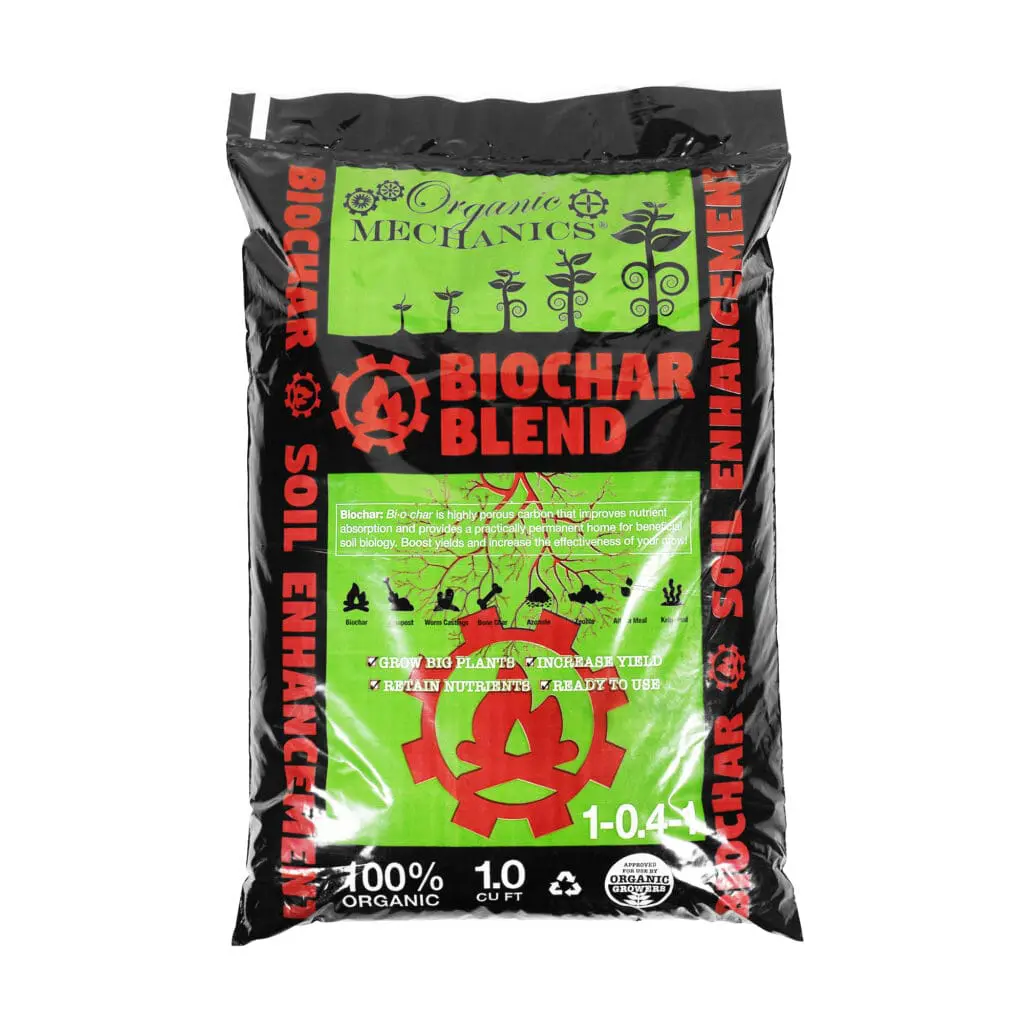
Depending on the plants included in the design, we may apply additional amendments, such as acidic fertilizer for ericaceous plants, or green sand for compacted areas.
Case Studies: Planting in May’s Full Moon
As we mentioned in the intro, we plant for eight months of the year, and not every installation can be optimized to lunar cycles. However, over the last decade, we have planted several landscapes during the full moon in May and June, when daytime insolation from the sun is at all-time high, and lunar phases are optimizing soil water content.
We observed significant growth during these installations, with gardens in their first season of growth looking mature enough to be in year two or three.
The first example is the Good Witches Garden, planted during the full moon in May. This photo from June 11th depicts the garden a few weeks after installation. 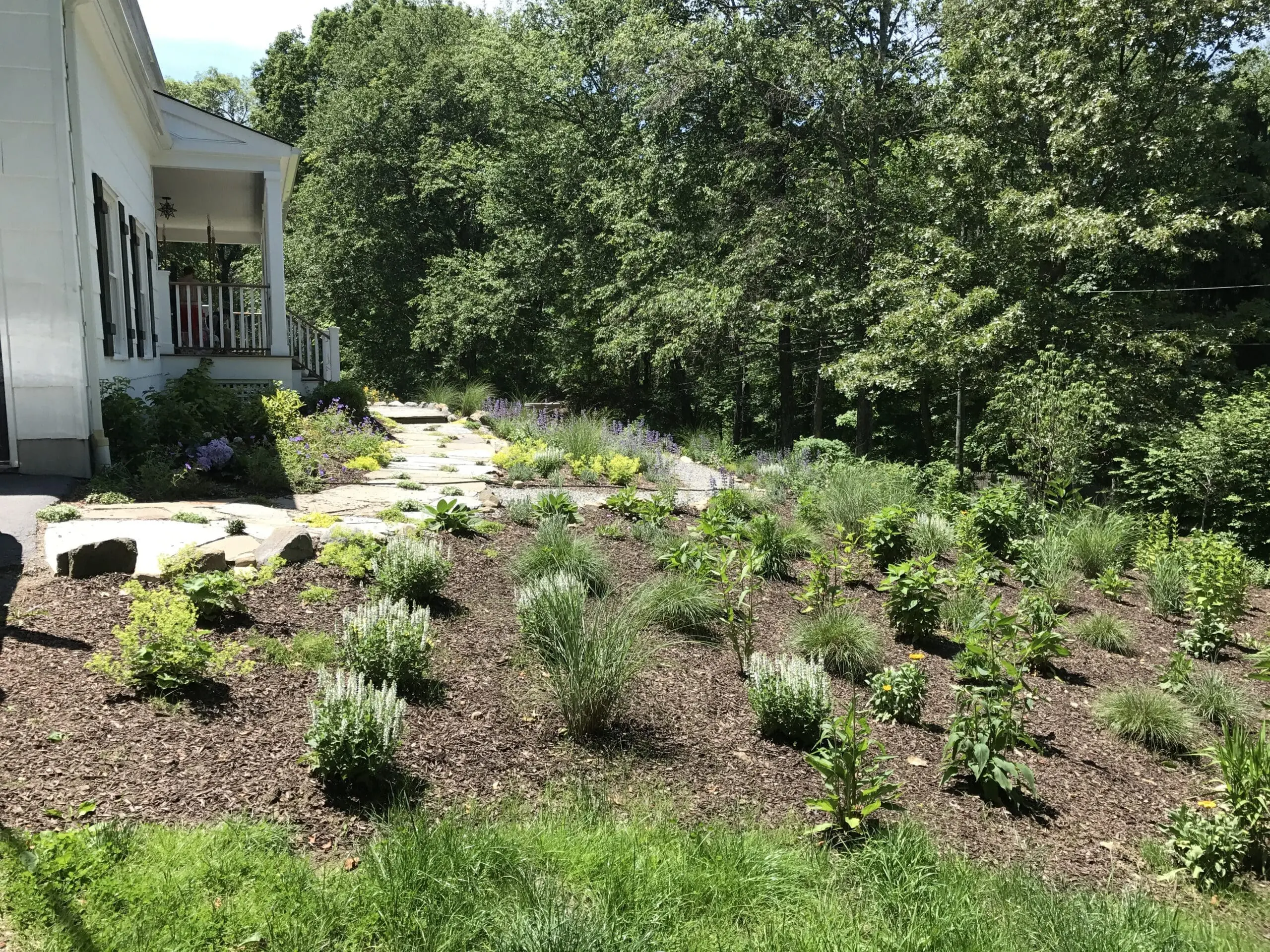
This second photo was taken in September of the same year! Growth is significant in all plants, they look very mature for season one. There is a saying in gardening, the first year it sleeps, the second year it creeps the third year it leaps. This garden is neither sleeping or creeping! Biodynamic timing truly jumpstarted this gardens growth.

For more information on this project, you can watch the six part YouTube series The Good Witches Garden or view the album in our portfolio.
Our second case study for biodynamic planting is this Native Pool Landscape that was planted in the full moon of June of last year. The first photo is taken June 11th and the second photo was taken just over a month later on July 13th; the garden already looks full and lush!
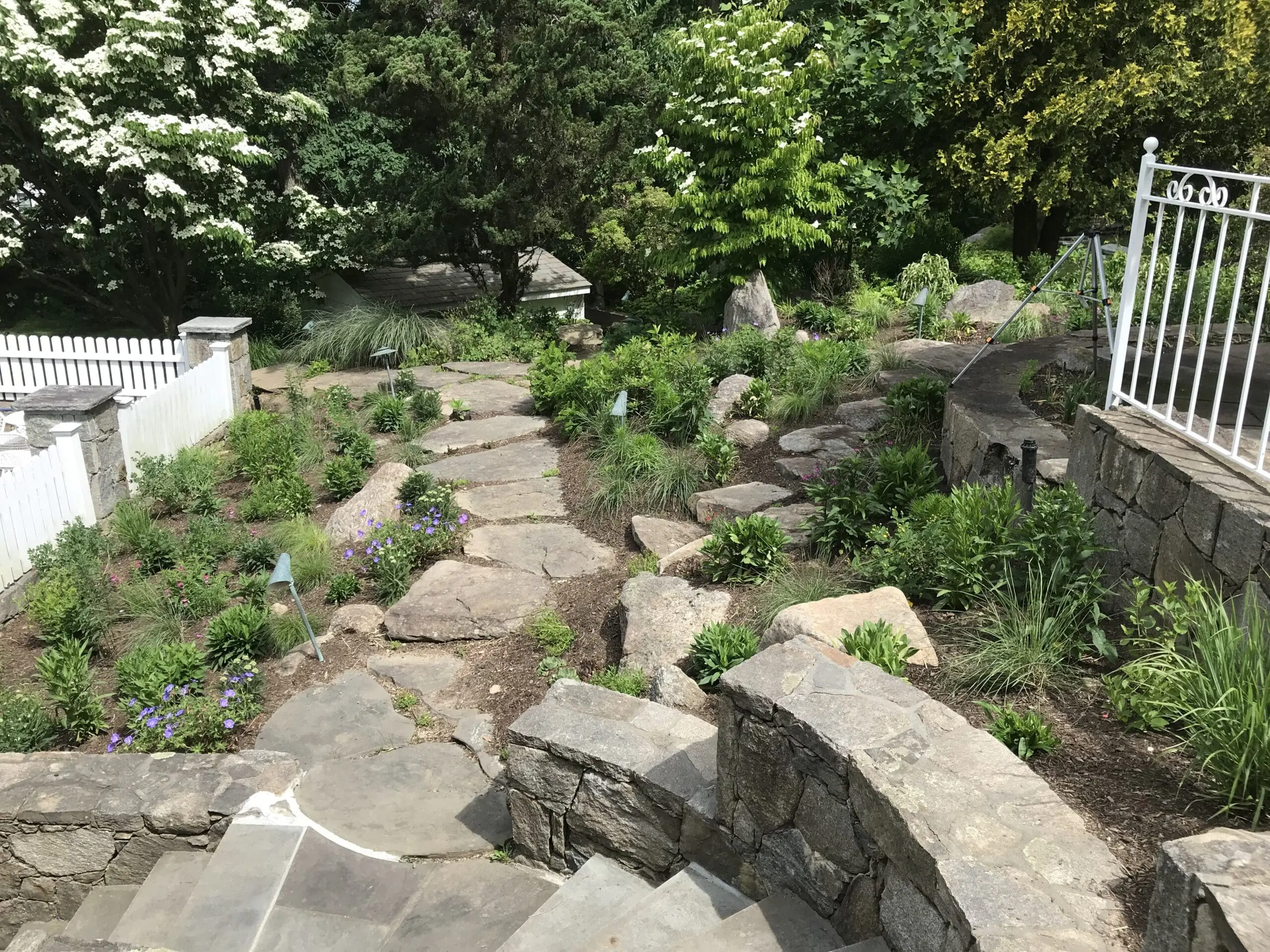
In this alternate view, we can follow the progression from June to July to September.
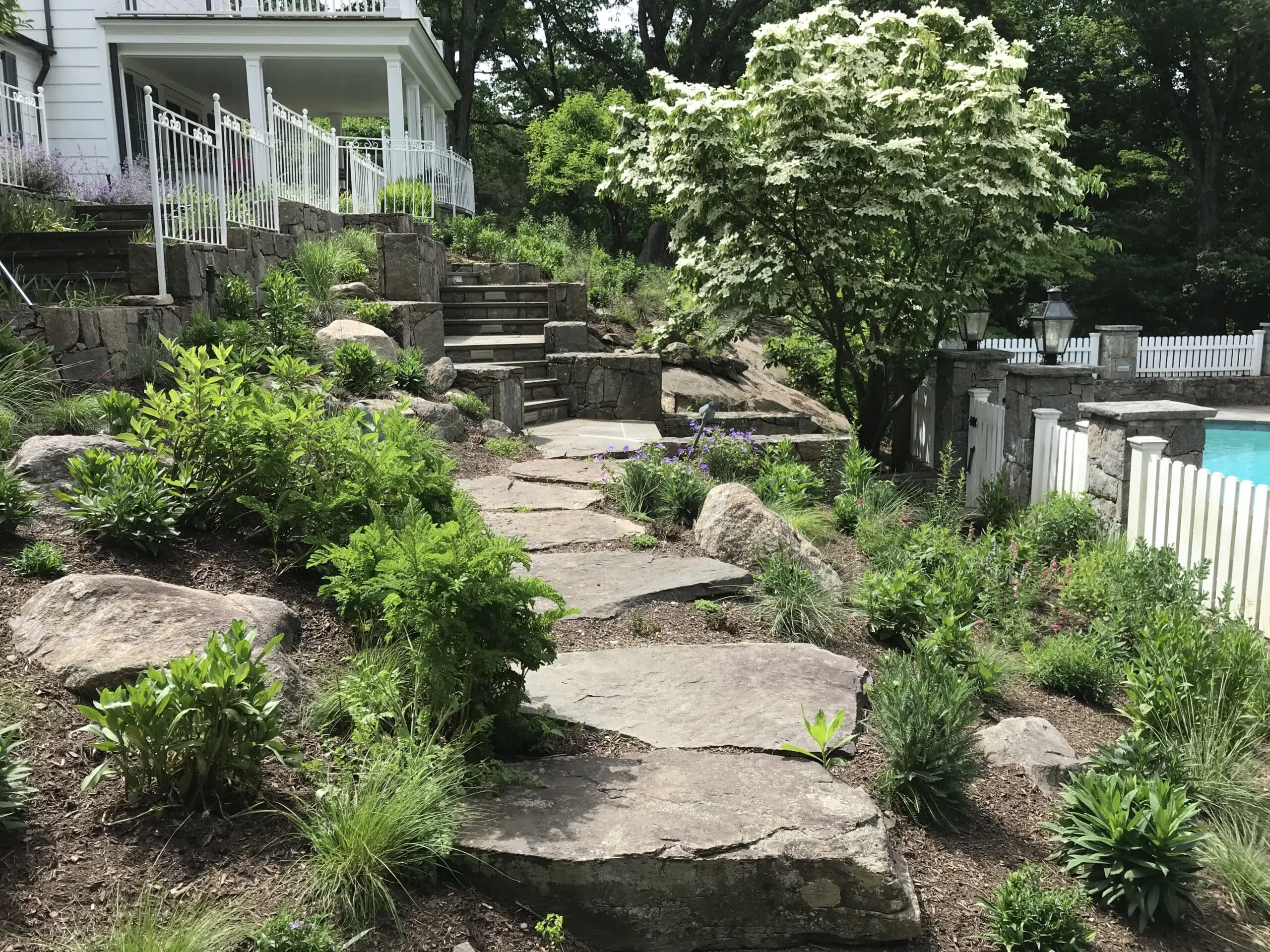
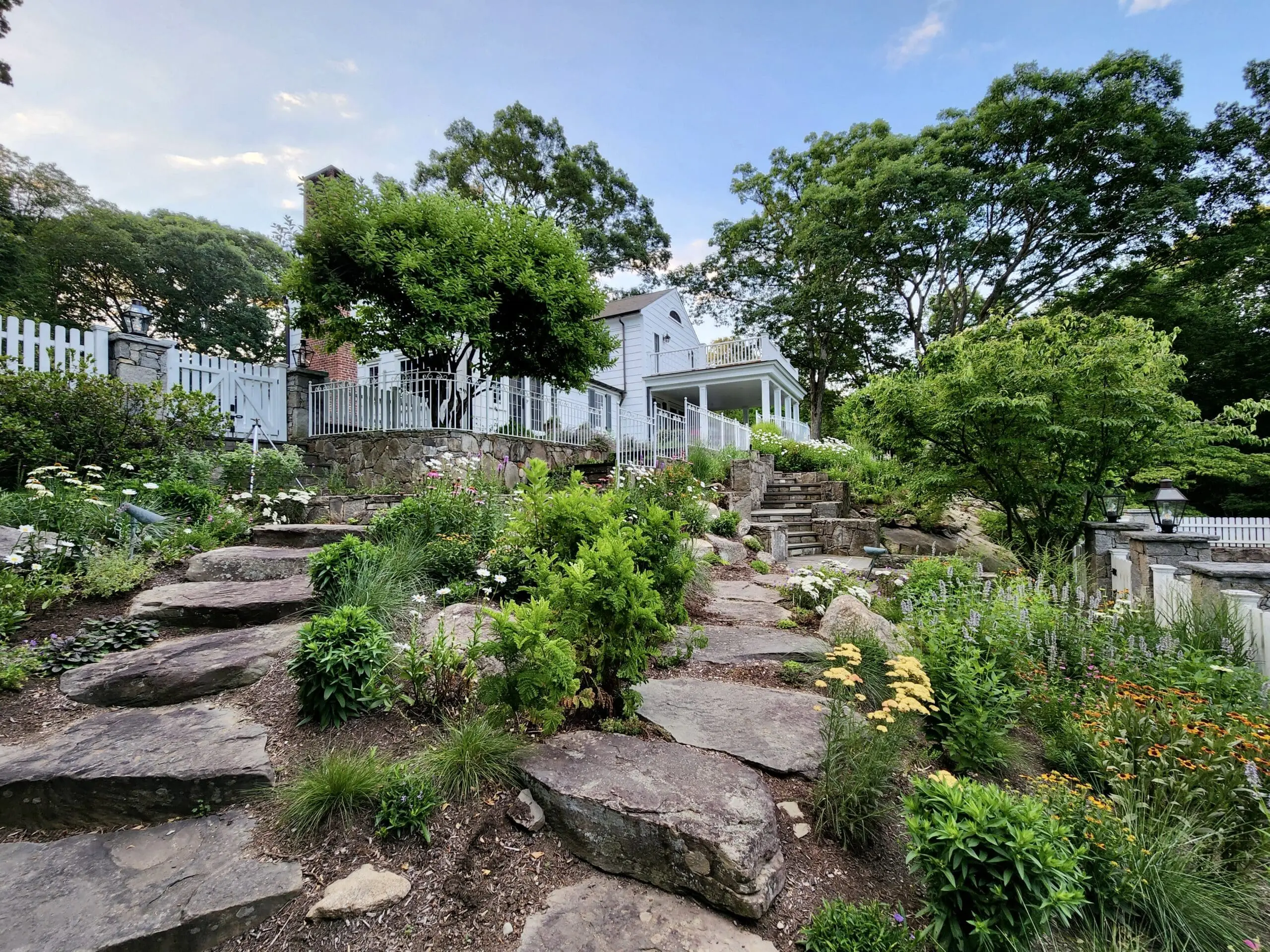
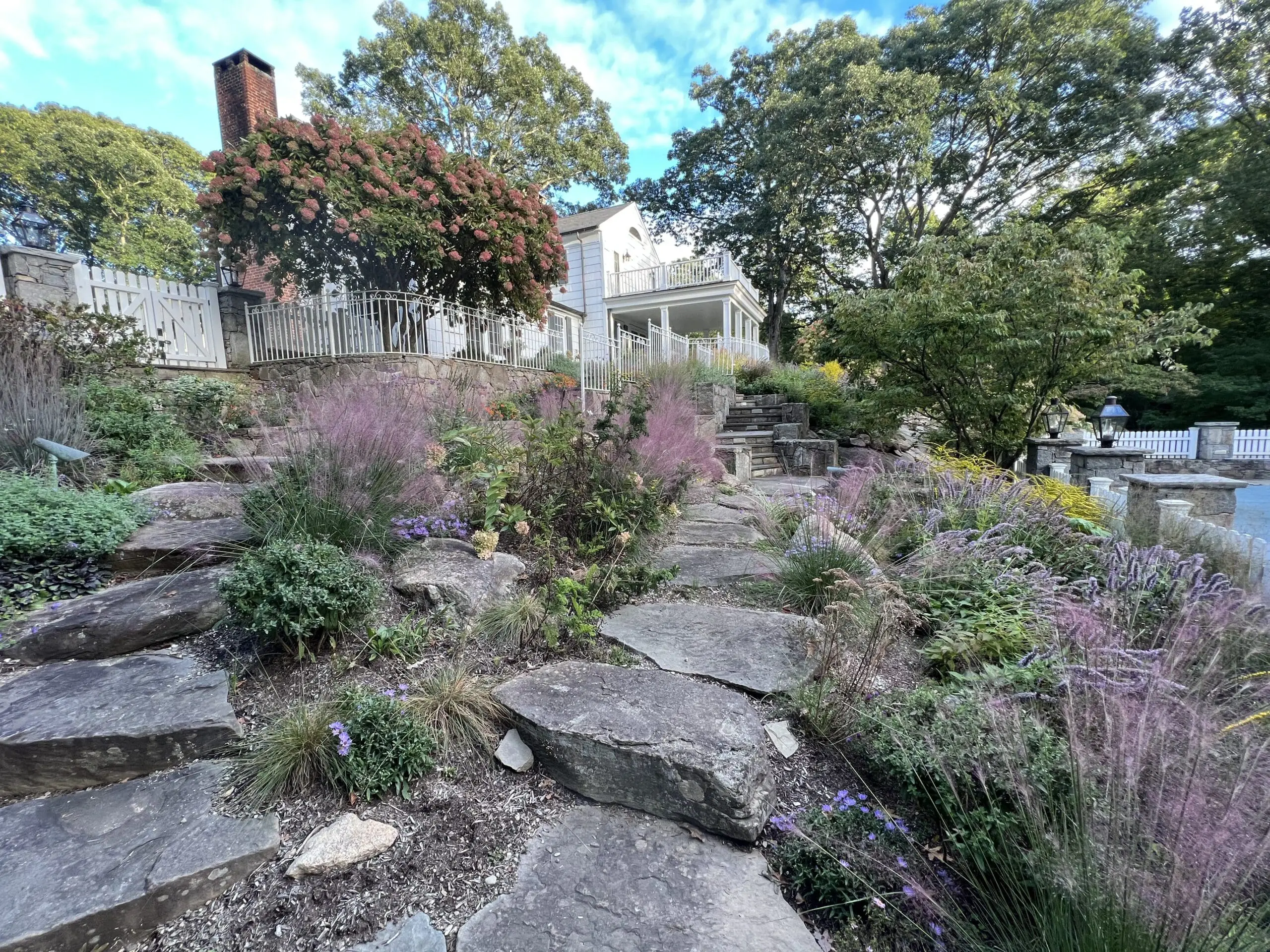
Final Thoughts on Biodynamic Gardening
If you want to apply biodynamic principles to a residential landscape, start with these basics. First, cultivating healthy LVING soil is paramount. That means NO synthetic fertilizers, pesticides, herbicides, or insecticides. Enrich your soil with compost – if you can source it locally (we like Stone Barns compost for Westchester-local), include biochar, and any other soil amendments deemed necessary by a soil test. The greater diversity of native plants in your organic landscape, the greater diversity of soil microbes.
Second, time your perennial installation and/or seeding with the full moon in May or June for the most dramatic growth in season one.
Finally, timing garden maintenance activities with the biodynamic calendar can unlock additional benefits, depending upon your goals. For example, cutting your lawn during the waxing (increasing) moon is said to jumpstart growth. If you want to mow less, for example during the heat of summer while you’re on vacation, mow during the waning (decreasing) moon to reduce growth. Pruning is also beneficial during the waxing moon, while harvesting should be scheduled during a waning moon.
—
Green Jay Landscape Design
914.560.6570